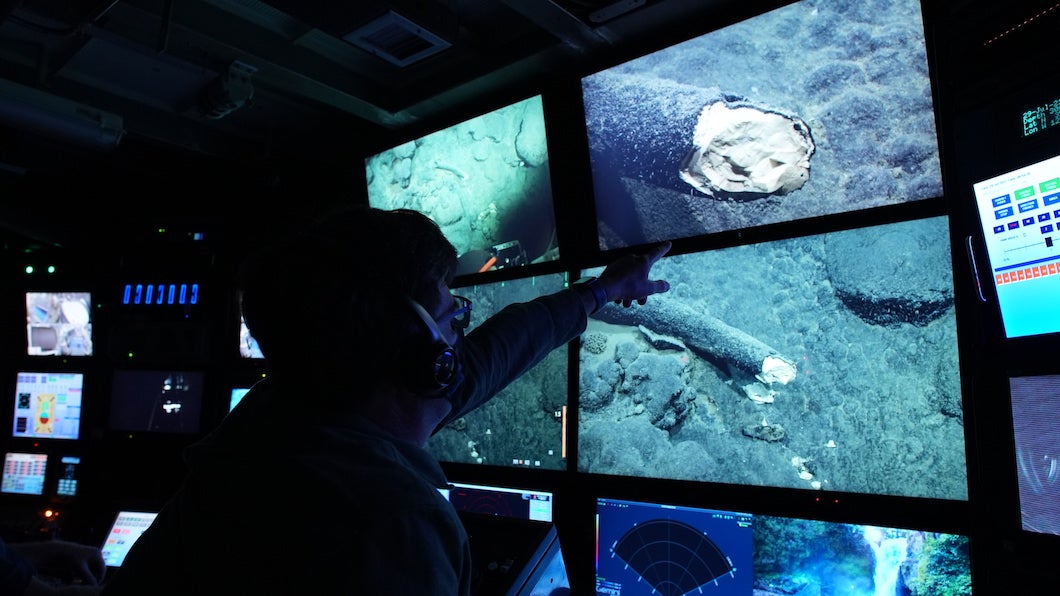The Independent's journalism is supported by our readers. When you purchase through links on our site, we may earn commission.
Scientists ‘stunned’ by unexpected discovery of mammoth tusk during deep-sea exploration
It might be the oldest well-preserved mammoth tusk recovered from this region of North America

Your support helps us to tell the story
From reproductive rights to climate change to Big Tech, The Independent is on the ground when the story is developing. Whether it's investigating the financials of Elon Musk's pro-Trump PAC or producing our latest documentary, 'The A Word', which shines a light on the American women fighting for reproductive rights, we know how important it is to parse out the facts from the messaging.
At such a critical moment in US history, we need reporters on the ground. Your donation allows us to keep sending journalists to speak to both sides of the story.
The Independent is trusted by Americans across the entire political spectrum. And unlike many other quality news outlets, we choose not to lock Americans out of our reporting and analysis with paywalls. We believe quality journalism should be available to everyone, paid for by those who can afford it.
Your support makes all the difference.Scientists have unexpectedly discovered a mammoth tusk while exploring a seamount more than 3km deep and about 300km off the shore of California, shedding light on one of the many secrets submerged in the ocean’s darkest depths.
The peculiar specimen was first spotted in 2019 by marine biologist Steven Haddock and Randy Prickett, the pilot of their remotely operated vehicle, during an expedition aboard the R/V Western Flyer.
Since they were only able to collect a small sample at the time, the researchers from the Monterey Bay Aquarium Research Institute (MBARI) returned this July to retrieve the complete specimen.
“You start to ‘expect the unexpected’ when exploring the deep sea, but I’m still stunned that we came upon the ancient tusk of a mammoth,” Dr Haddock said in a statement.
While other mammoths have in the past been retrieved from the ocean, the scientists say these were mostly from depths of a few tens of metres.
“This specimen’s deep-sea preservational environment is different from almost anything we have seen elsewhere,” palaeontologist Daniel Fisher from the University of Michigan, who specialises in the study of mammoths and mastodons, added.
An interdisciplinary team of scientists, including those from the University of California, Santa Cruz (UCSC) and the University of Michigan, are currently examining the tusk.
Preliminary analysis, which is yet to be published in a peer-reviewed journal, revealed that the tusk could be more than 100,000 years old.
If the tusk had been found on land, deciphering its history may have been tougher, scientists said. They believe it could potentially be the oldest well-preserved mammoth tusk recovered from this region of North America.
“Our age estimate on the tusk is largely based on the natural radioactive decay of certain uranium and thorium isotopes imparted to the tusk from the ocean,” said Terrence Blackburn, associate professor of Earth and planetary sciences at UCSC.
The researchers also hope to retrace the history of oceanographic currents to better pinpoint where the tusk may have originally come from.
Scientists led by Beth Shapiro, professor of ecology and evolutionary biology at UCSC, also plan to sequence the ancient DNA from the specimen and compare it to the DNA already recovered from other mammoths.
“Specimens like this present a rare opportunity to paint a picture both of an animal that used to be alive and of the environment in which it lived,” Dr Shapiro said. “Mammoth remains from continental North America are particularly rare, and so we expect that DNA from this tusk will go far to refine what we know about mammoths in this part of the world.”
With a growing interest across the world in exploiting the deep sea by mining for valuable metals, scientists said the current discovery is a “fragile reminder” of similar mysteries hidden on the seafloor for eons, worthy of protection.
“We are grateful to have a multidisciplinary team analysing this remarkable specimen, including a geochronologist, oceanographers, and palaeogenomicists from UCSC; and palaeontologists at the University of Michigan,” Dr Haddock said. “Our work examining this exciting discovery is just beginning and we look forward to sharing more information in the future.”
Join our commenting forum
Join thought-provoking conversations, follow other Independent readers and see their replies
Comments